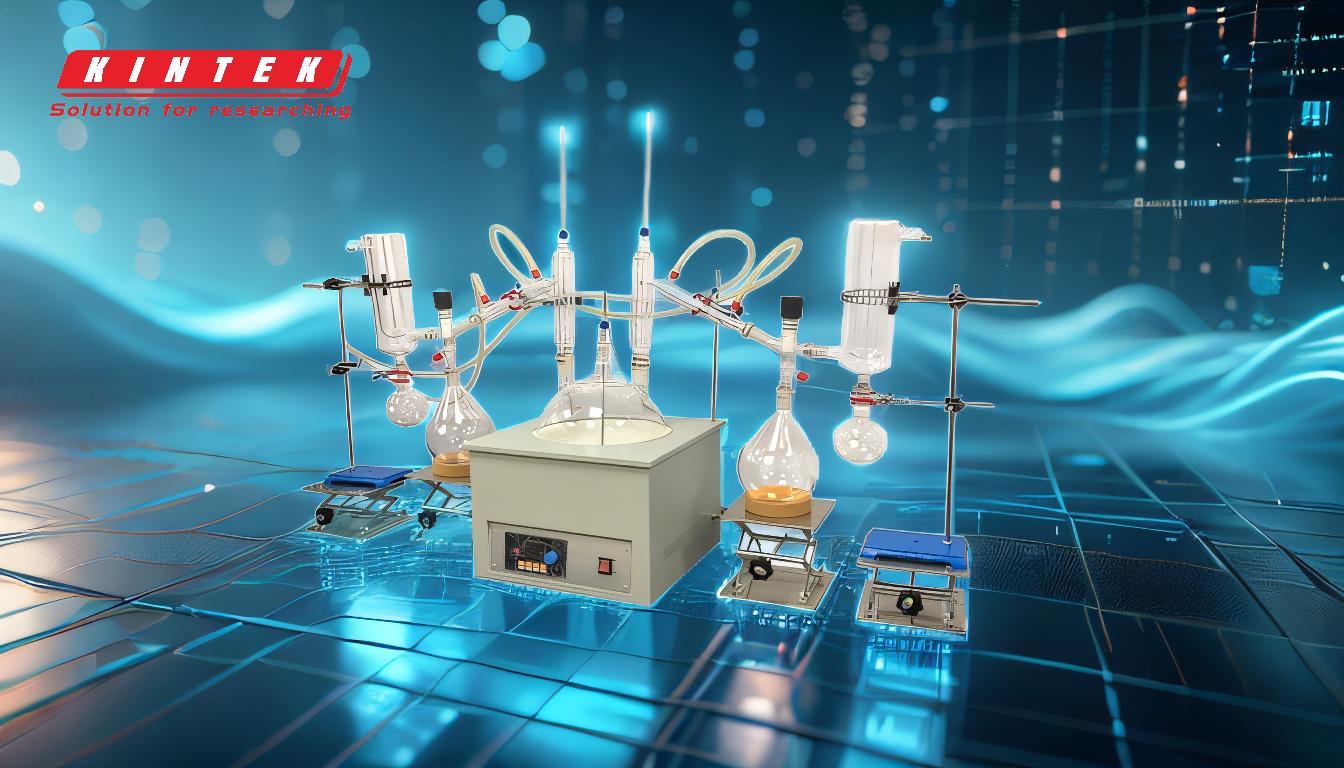The temperature at which the distillate should be collected during distillation depends on the specific material being distilled and the desired fraction. Generally, the process involves gradual heating, starting around 50°C and increasing to 140°C, then further to 220°C, while avoiding temperatures above 250°C. The first fraction, known as the "heads," typically starts to distill around 180°-190°C. The stirring speed should be adjusted to 400-800 RPM as the fluid level decreases. If no reaction occurs, the temperature should be increased in increments of no more than 10°C at a time. The typical distillation temperature range is 130-180°C, though higher temperatures up to 343°C can be achieved with specialized equipment.
Key Points Explained:

-
Initial Heating Phase:
- Start the distillation process by heating the mantle to 50°C.
- Gradually increase the mantle temperature to 140°C, allowing it to stabilize about 10 degrees below the set point to prevent overshooting.
-
Intermediate Heating Phase:
- Once the mantle reaches 130°C, set the temperature to 220°C.
- This phase involves some variability depending on the material being distilled, but temperatures should not exceed 250°C to avoid degradation.
-
Collection of the First Fraction (Heads):
- The first fraction, known as the "heads," typically starts to distill around 180°-190°C.
- This is indicated by a reaction in the distillation head.
-
Adjusting Stirring Speed:
- As the fluid level in the flask decreases, increase the stirring speed to 400-800 RPM.
- This ensures even heating and efficient distillation.
-
Temperature Increments:
- If no reaction is observed, increase the temperature in increments of no more than 10°C at a time.
- This cautious approach helps in identifying the correct distillation temperature without overshooting.
-
Typical Distillation Temperature Range:
- The typical distillation temperature range is 130-180°C (266-356°F).
- For specialized applications, temperatures up to 343°C (650°F) can be achieved using an oil circulating TCU.
-
Effect of Heating Bath Temperature:
- The temperature of the heating bath affects the rate at which the product boils at a given pressure.
- A higher bath temperature increases the energy input, speeding up the distillation process, but does not raise the product's temperature above its boiling point.
By following these steps and considerations, the distillate can be collected at the appropriate temperature, ensuring the purity and quality of the desired fraction.
Summary Table:
| Phase | Temperature Range | Key Actions |
|---|---|---|
| Initial Heating Phase | 50°C to 140°C | Gradually heat to 140°C, stabilize 10°C below set point to prevent overshooting. |
| Intermediate Heating Phase | 130°C to 220°C | Set to 220°C, avoid exceeding 250°C to prevent material degradation. |
| Collection of First Fraction | 180°C-190°C | Collect the "heads" fraction when reaction occurs in the distillation head. |
| Adjusting Stirring Speed | 400-800 RPM | Increase speed as fluid level decreases for even heating and efficiency. |
| Temperature Increments | ≤10°C increments | Increase cautiously if no reaction is observed. |
| Typical Distillation Range | 130°C-180°C | Standard range for most distillations; higher temps up to 343°C for specialized. |
Need help optimizing your distillation process? Contact our experts today for tailored solutions!














